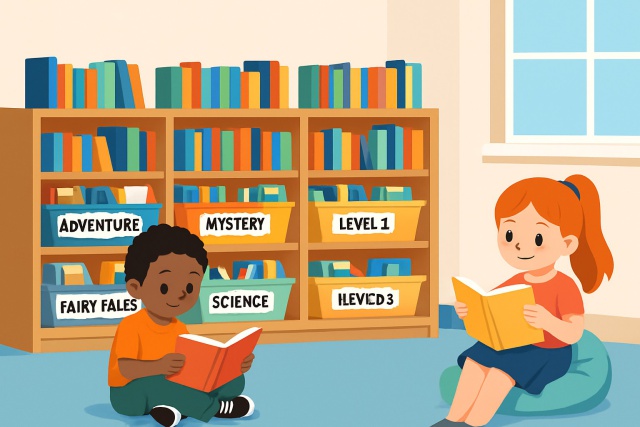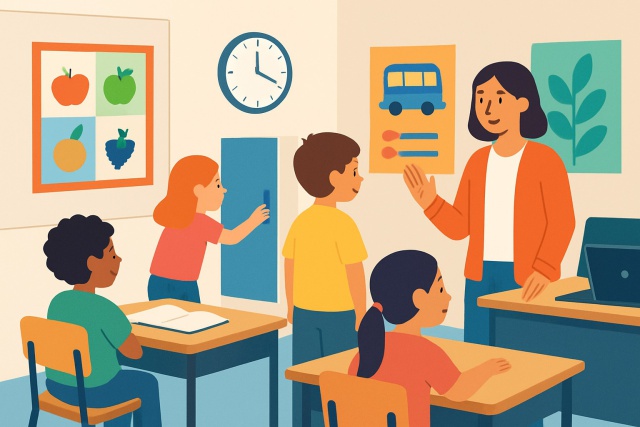Set Up Paper Passer Roles For Active Classroom Participation

Giving a student the paper passer role in the classroom can really amp up their involvement and keep them genuinely engaged. It also smooths out the class flow by handing over the reins for everyday tasks.
Teachers often wrestle with the task of keeping students focused and genuinely engaged during lessons—it’s no small feat. Handing out simple roles like passing out papers can work wonders. It cuts down on interruptions for the teacher and gives students a sense of ownership.
Getting to Know the Paper Passer Role A Closer Look
A paper passer is the student who steps up to the plate by handing out worksheets or other materials to classmates and making sure everything flows smoothly and lands in the right hands on time during class.
This role plays a key part in keeping the classroom humming along by quietly cutting down on those little disruptions that tend to pile up. It nudges student accountability in the right direction, handing them trusted responsibilities that make them feel capable and important.
Why Giving Out Paper Passer Roles Can Actually Make Life Easier
- Encourages students to take the reins with classroom tasks, which often does wonders for boosting their confidence.
- Supports peer interaction and social skills by organizing the whole materials exchange keeping chaos at bay and spirits high.
- Cuts down on those pesky teacher interruptions, helping lessons glide along smoothly and saving precious time.
- Develops leadership skills as students step up and handle responsibilities with a surprising touch of professionalism.
- Helps make the most of classroom time by streamlining how materials get passed around because every minute counts.
- Promotes active involvement by giving students a genuine role in their learning environment, turning them from bystanders into participants.
Handing over the task of passing out papers to students does more than just get the job done. It breathes life into the classroom and encourages a cooperative vibe. This simple responsibility often sparks greater student engagement during lessons and nurtures essential soft skills like communication, leadership and teamwork. When the workload is spread around, teachers find themselves free to focus more on teaching. Students pick up habits like punctuality and reliability along the way.
A Simple Guide to Setting Up Paper Passer Roles (that won’t make your head spin)
Before you dive into introducing the paper passer role, it’s a good idea to take a moment and really size up your class and how everything’s laid out in the room. Be crystal clear about what the responsibilities actually entail.
Take a good look at your classroom size and seating layout to figure out how many paper passers you will need and find the smoothest way to hand out those papers without causing a traffic jam.
Be clear about what the paper passer is responsible for including when and how to get those papers into the right hands without a hitch.
Set up a rotating schedule so every student gets a fair shot at the role. Sharing the duties keeps things fresh and makes sure nobody feels stuck in a paper-passing rut.
Introduce the role to your students by explaining why it matters and how it fits into your daily routine. A little context goes a long way in boosting buy-in.
Offer some initial support and keep an eye on things at first. Helping paper passers settle in with confidence usually pays off big time down the road.
When you set up the paper passer role, it’s worth keeping your students’ ages and the layout of your classroom in mind. Younger kids tend to thrive with clear, step-by-step instructions and a gentle nudge now and then. Older students usually handle more independence and leadership tasks like pros. In larger classes, having a handful of paper passers or dividing the room into zones can really keep things rolling smoothly and quickly.
Tools and Strategies That Really Give Paper Passers a Leg Up
- Use straightforward visual aids like charts or name tags to gently nudge students in remembering when it is their turn.
- Post a rotating schedule in a spot everyone can see so paper passers always know when it’s their moment to shine.
- Set clear simple guidelines for passing papers carefully and quietly to keep distractions to a minimum.
- Encourage teamwork by letting students lend a hand to one another if any hiccups pop up.
- Weave the paper passer role into a bigger student jobs board to boost a sense of responsibility and hopefully a little pride in their important duties.
These handy tools help paper passers stay on top of their game and juggle their tasks with ease, which naturally cuts down on confusion and boosts their effectiveness. Visual cues along with no-nonsense rules lay down clear expectations from the get-go. Meanwhile, a little support from peers goes a long way in building teamwork and smoothing out the whole paper passing routine.
Common Challenges and How We Can Tackle Them Together
Common challenges with paper passer roles often crop up when some students either zone out or just forget to take part. Papers get dropped or mishandled more times than you’d expect, especially during those hectic transitions or busy moments when everyone’s juggling a million things at once.
- Toss in gentle reminder prompts before switching roles to keep students on their toes without feeling rushed.
- Dish out positive reinforcement and genuine praise when students nail their roles—it’s amazing how a bit of encouragement can light a fire under them.
- Mix up the roles frequently to keep things lively and ensure nobody gets left out of the spotlight.
- Offer a little one-on-one coaching for those who find responsibility or staying organized a bit tricky—it goes a long way.
- And for the little ones, loop in parents by sharing what’s expected and tossing out some handy tips for supporting their kiddo at home.
Tackling these challenges early on really goes a long way in keeping the paper passer role both useful and dare I say even a bit engaging. Teachers can lead by example by showing the behaviors they hope to see, offering steady feedback and staying open to making changes when the situation calls for it.
Different Flavors of the Paper Passer Role
The paper passer role is pretty flexible and can be tweaked to suit different classroom settings, student age groups and subjects.
- Have teams of paper passers during group lessons to spark more teamwork and keep things moving smoothly.
- Use digital tools like electronic handouts to support your paperless classroom goals without breaking a sweat.
- Mix up the paper passer gig with roles like attendance monitor or materials manager to keep things fresh and avoid boredom.
- Set up a ‘lead paper passer’ spot for older students so they can take the reins and help their classmates run the distribution like pros.
Switching up the paper passer role not only helps include students with all sorts of needs and preferences but also gives a nice little boost to their leadership and technical skills.
When teachers lay out clear paper passer roles, they usually notice a boost in classroom participation and a smoother ride when it comes to management. This little tweak also nudges students toward gaining a sense of responsibility and leadership skills.






